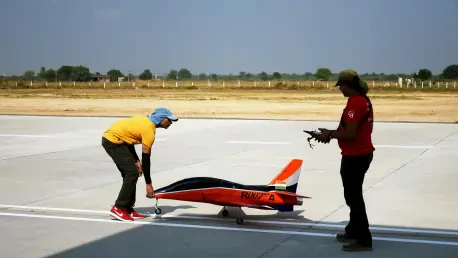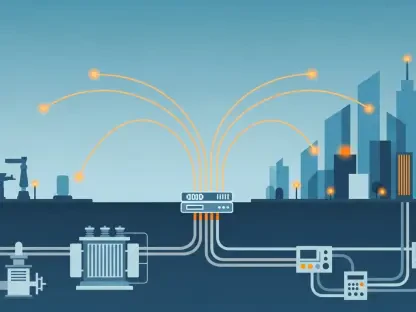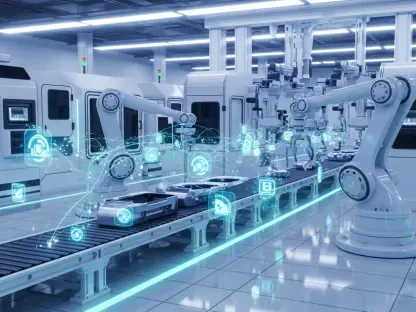Setting the Stage for Aerospace Innovation
In an era where global aerospace giants are racing to secure footholds in emerging markets, India stands out as a burgeoning hub for technological advancement and cost-effective talent, especially as the nation’s defense and aviation sectors are poised for exponential growth. The strategic moves of international players like Dassault Aviation are drawing significant attention. The recent inauguration of a larger facility for Dassault Aircraft Services India – Engineering Center in Pune, Maharashtra, marks a pivotal moment in this landscape, showcasing how cutting-edge engineering capabilities can intersect with national priorities to redefine industry standards.
This expansion is not merely a physical upgrade but a bold statement of intent from a leading French aerospace company to deepen its technological roots in India. It reflects a broader trend of localization in the global defense sector, where partnerships and local innovation are becoming as critical as the technologies themselves. The focus on engineering prowess at this new center offers a lens through which to evaluate how Dassault is positioning itself within India’s dynamic aerospace ecosystem.
Analyzing the Technological Core of the Pune Facility
Capacity Boost and Engineering Excellence
At the heart of Dassault Aviation’s expanded presence in Pune lies a significant increase in engineering capacity, now accommodating over 150 skilled professionals. This doubling of manpower is a clear indicator of the company’s commitment to scaling up its technological output. The facility is equipped to handle complex design and engineering tasks, positioning it as a cornerstone for developing next-generation aerospace solutions tailored to both local and international demands.
Beyond sheer numbers, this expansion underscores a deliberate push toward nurturing local talent. By investing in a robust engineering team, Dassault is fostering an environment where innovation can thrive, leveraging India’s deep pool of technical expertise. This move enhances the company’s ability to tackle intricate projects while embedding itself more firmly within the regional industrial framework, ensuring that technological advancements are not just imported but also homegrown.
Supply Chain Integration and Collaborative Design
Another critical dimension of the Pune center’s technological framework is its role in bolstering supply chain integration. The facility is designed to support both Indian and global supply chains by enhancing design capabilities that streamline production processes. This integration ensures that components and systems developed in Pune can seamlessly align with Dassault’s worldwide operations, maintaining high standards of quality and efficiency.
Collaboration with local partners and suppliers further amplifies the center’s impact. By working closely with Indian entities, Dassault is not only meeting contractual obligations but also creating a synergistic network that drives technological progress. This collaborative approach helps in adapting global best practices to local contexts, ensuring that the engineering solutions crafted in Pune are both innovative and relevant to India’s unique market needs.
Strategic Alignment with National Goals
Supporting the “Make in India” Initiative
The technological advancements at the Pune facility are closely aligned with the Indian government’s “Make in India” initiative, which aims to transform the country into a global manufacturing hub. Dassault’s investment in local engineering and design capabilities directly supports this vision by promoting indigenous production and reducing reliance on foreign imports. The center serves as a practical embodiment of how international expertise can contribute to national self-reliance in high-tech sectors.
This alignment also extends to skill development, as the facility provides opportunities for Indian engineers to engage with cutting-edge aerospace technologies. Such initiatives help build a workforce that is not only proficient in current systems but also prepared for future innovations, reinforcing India’s position as a competitive player in the global aerospace arena. The synergy between corporate strategy and policy goals highlights the potential for technology to drive systemic change.
Fulfilling Defense Contract Obligations
A significant aspect of Dassault’s technological strategy in India involves meeting offset obligations tied to the Rafale fighter jet contract with the Indian Air Force. These obligations require a portion of the contract value to be reinvested into the local economy, often through technology transfer or industrial partnerships. The expanded Pune center plays a crucial role in this context, channeling resources into engineering projects that support defense indigenization.
This commitment goes beyond compliance, as it fosters an ecosystem where advanced defense technologies can be developed domestically. By focusing on localized engineering solutions, Dassault contributes to India’s long-term goal of achieving autonomy in critical defense capabilities. The technological infrastructure at Pune thus serves as both a contractual fulfillment and a catalyst for broader industry transformation.
Real-World Impact on Aerospace Technology
Driving Innovation in India’s Defense Sector
The practical implications of Dassault’s technological investments in Pune are evident in the enhanced innovation within India’s defense and aerospace sectors. The engineering center acts as a hub for developing solutions that address specific challenges faced by the Indian Air Force and other stakeholders. This localized approach ensures that technologies are not only advanced but also tailored to operational realities in the region.
Moreover, the facility has become a breeding ground for collaborative projects that push the boundaries of aerospace engineering. By partnering with local institutions and companies, Dassault is facilitating the exchange of ideas and expertise, leading to breakthroughs that benefit the broader industry. This ripple effect underscores the transformative potential of targeted technological investments in emerging markets like India.
Tapping into Market and Workforce Potential
The expansion also reflects a strategic recognition of India’s vast market potential and skilled workforce. By embedding advanced engineering capabilities in Pune, Dassault is well-positioned to capitalize on the cost advantages and technical proficiency that India offers. This move aligns with a global trend where aerospace companies are increasingly looking toward markets that combine affordability with high-quality output.
Such investments have a dual impact, benefiting both the company and the host country. For Dassault, access to a talented pool of engineers translates into operational efficiencies and innovation. For India, it means job creation, technology transfer, and a stronger foothold in the global aerospace supply chain, illustrating how technology can serve as a bridge between corporate and national interests.
Navigating Challenges and Leveraging Opportunities
Addressing Potential Hurdles
Despite the promising outlook, the technological expansion in Pune is not without challenges. Regulatory complexities in India’s defense sector can pose significant hurdles, requiring careful navigation to ensure compliance while maintaining project timelines. Additionally, integrating advanced systems with local infrastructure may encounter compatibility issues that demand adaptive solutions.
Market competition from other international and domestic players also presents a concern. As more aerospace firms establish a presence in India, Dassault must continuously innovate to maintain its edge. Addressing these challenges requires a proactive approach, including robust stakeholder engagement and agile responses to evolving regulatory landscapes, ensuring that technological progress remains unimpeded.
Seizing Growth Prospects
On the flip side, the opportunities for technological growth are substantial. India’s cost-effective talent pool offers a competitive advantage that Dassault can leverage to drive research and development at scale. Building long-term partnerships with local entities further enhances the potential for sustained innovation, creating a foundation for future projects and expansions.
Efforts to overcome limitations are already underway, with a focus on sustainable practices and capacity building. By prioritizing these areas, Dassault can solidify its technological footprint in India, turning challenges into stepping stones for growth. The balance between immediate obstacles and long-term prospects shapes the trajectory of this engineering endeavor.
Reflecting on a Milestone in Aerospace Technology
Looking back, Dassault Aviation’s expansion of its Engineering Center in Pune stands as a testament to the power of strategic technological investment. The facility’s enhanced capacity, alignment with national policies, and focus on supply chain integration mark a significant chapter in the company’s journey in India. It demonstrates how targeted engineering initiatives can drive innovation while supporting broader industry goals.
Moving forward, the emphasis should be on deepening collaborations with local stakeholders to further refine technological outputs. Exploring avenues for additional investments in emerging fields like unmanned systems or sustainable aviation technologies could position Dassault as a frontrunner in India’s aerospace future. Strengthening training programs to upskill the workforce would ensure that the talent pool remains a competitive asset.
Ultimately, the next steps should revolve around leveraging this foundation to influence global aerospace trends from Indian soil. By continuing to align corporate strategies with national priorities, Dassault can play a pivotal role in shaping the technological landscape of defense and aviation. This expansion, as a milestone, highlights the importance of adaptability and partnership in achieving lasting impact.









